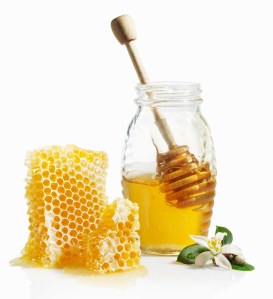
Mead may conjure up images of Renaissance fairs or Germanic folk tales, but it is enjoying renewed popularity among imbibing aficianados. Also known as honey wine, this tipple is made from fermented honey and water, sometimes with added yeast. You can produce countless style and variations—from dry to sweet and anything in between, including sparkling—by tinkering with the ingredient proportions and the fermentation process. And just as a wine’s notes are dependent on the terroir of its grapes, the flavor of a mead changes based on the flowers that honeybees use to pollinate. What else makes mead so special?
1. Some claim that mead was the first alcoholic drink, predating wine and beer. The earliest evidence of mead production dates back to 7000 BC from pottery vessels in northern China. Historically, mead was something of a global beverage: it was consumed by Greek gods on Mt. Olympus, Vikings, and African bushmen. In fact, mead was drank before men knew how to harness the meadmaking process; mead fermented naturally on its own when a beehive combined with rainwater and yeast in the air. Mead was a tipple of choice from these ancient times through the Late Middle Ages, when honey was supplanted by cheaper sugars, which led to a rise in ales.
(MORE: Summer Sips: What to Drink Right Now)
2. Norse mythology tells of a “Mead of Poetry” that turned anyone who drank it into an instant scholar, able to recite items from memory and solve intractable quandaries. The legend goes that after a war between two rival factions, the gods sealed a truce by spitting into a bowl. This spit formed a new god, Kvasir, who was renowned for his intelligence. Enemies later killed Kvasir, mixed his blood with honey and let it ferment to form a mead that was said to provide poetic inspiration to anyone who drank it.
3. Mead halls play a prominent part in the epic poem Beowulf. The monster Grendel terrorized one of these noisy, communal gathering places, which prompted the warrior Beowulf to set off and confront Grendel, finally killing him after a battle.
4. The term ‘honeymoon’ can be traced to the medieval tradition of drinking this honey wine for a full cycle of the moon after marriage. Mead was thought to be an aphrodisiac, and if it was consumed by newlyweds, offspring would hopefully soon follow. A bride’s father would often include enough mead in her dowry to last for a month.
5. Though mead faded from prominence after the Middle Ages, many European monasteries continued to make it, most famously the Holy Island of Lindisfarne off the coast of England. Craft mead is now poised to make a comeback, although it hasn’t yet been commercialized on a large scale. There are at least 165 meaderies in the U.S., according to the American Mead Makers’ Association (AMMA). Why is mead so alluring now? It possesses a mysterious, ancient aura, and it’s also not widely available in bars, making it more of an exclusive drink for those in the know.


